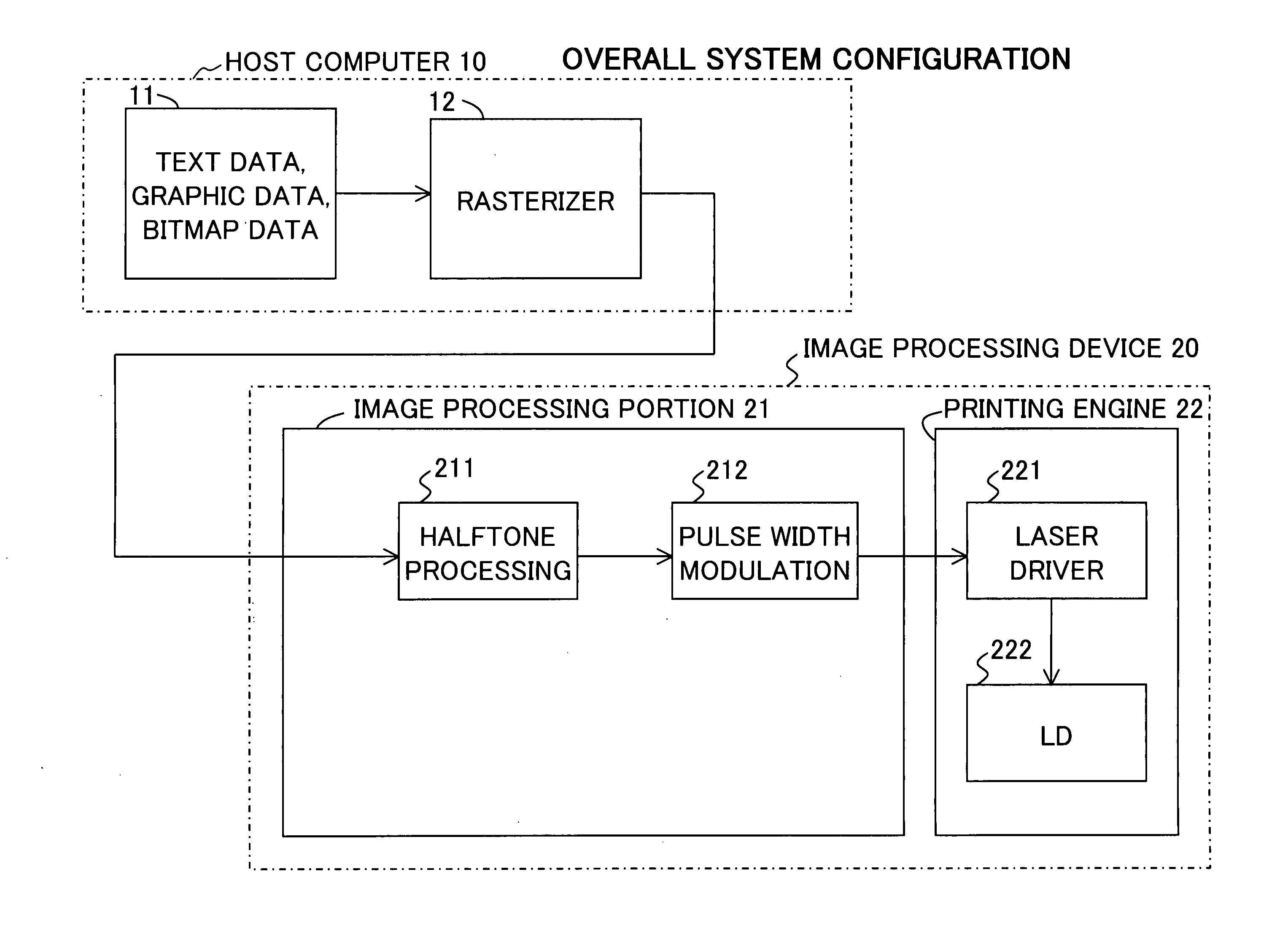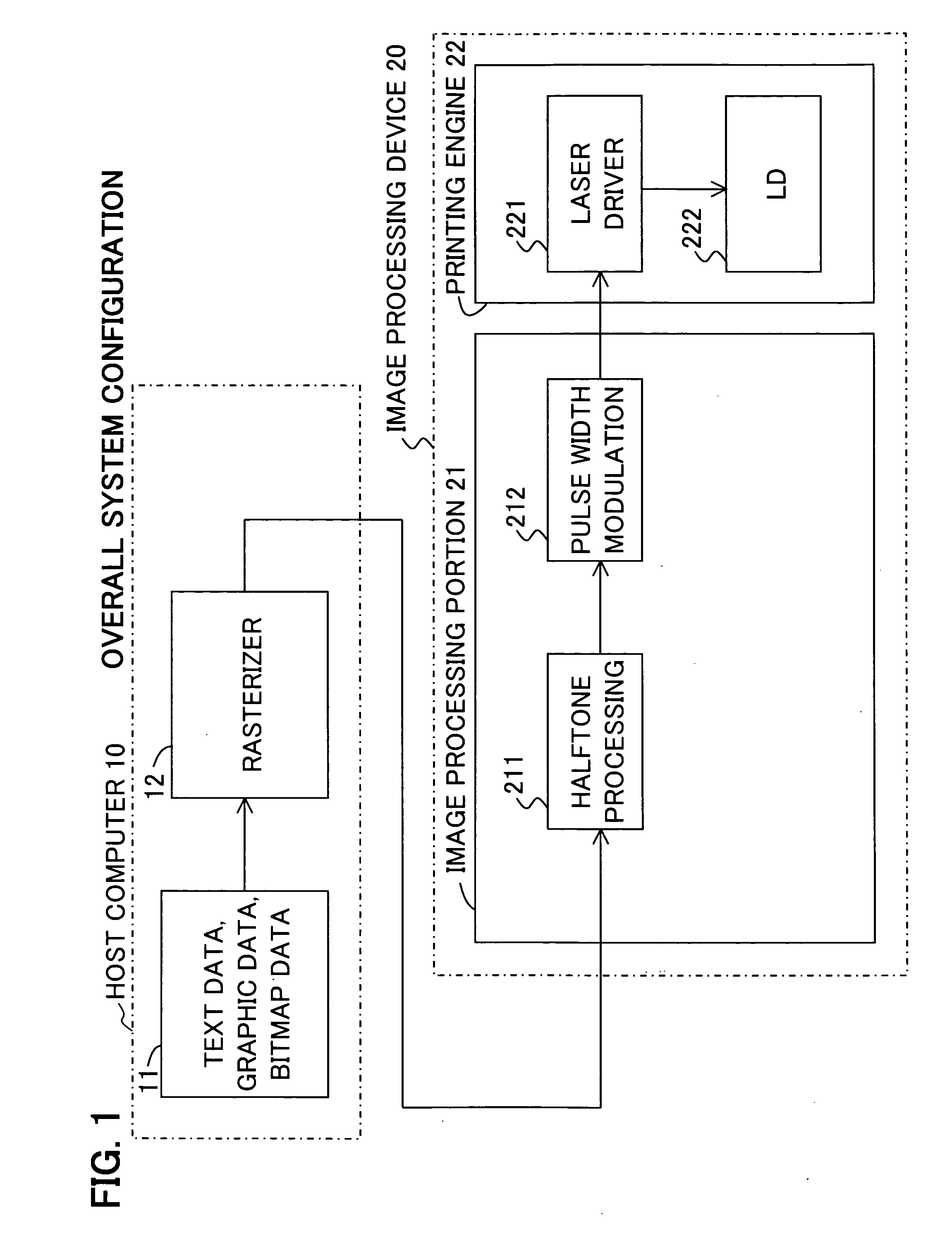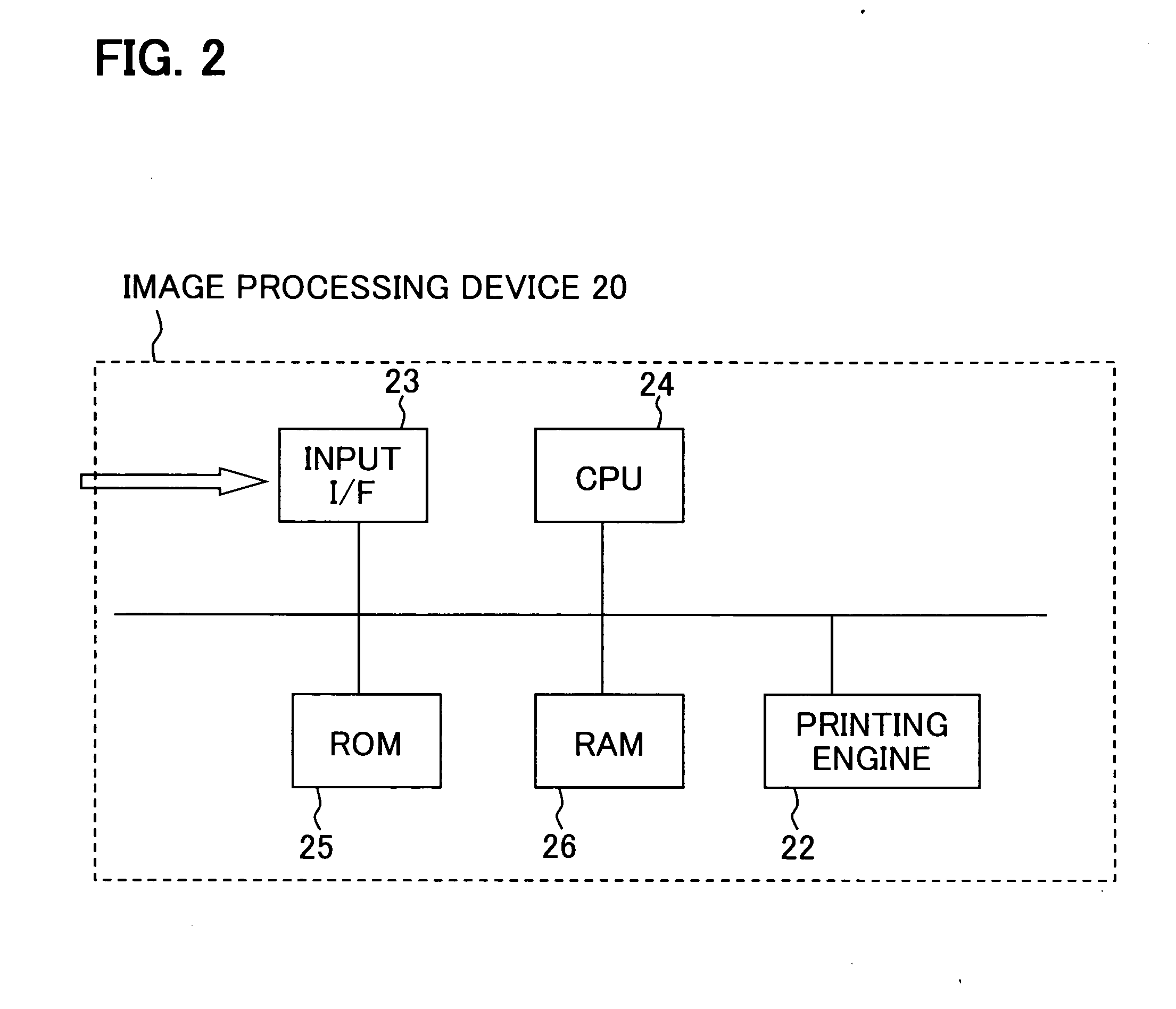Image processing device, image processing method, and image processing program
a technology of image processing and image processing method, applied in the field of image processing device, image processing method, image processing program, can solve the problems of unpleasant noise, image quality, and appearance of output image, and achieve the effect of suppressing unpleasant noise and little scattering
- Summary
- Abstract
- Description
- Claims
- Application Information
AI Technical Summary
Benefits of technology
Problems solved by technology
Method used
Image
Examples
first embodiment
[0042] Below, preferred embodiments for implementation of the invention are explained, referring to the drawings. FIG. 1 shows the overall configuration of a system to which this invention is applied. This system as a whole comprises a host computer 10 and an image processing device 20.
[0043] The host computer 10 comprises an application portion 11 and a rasterizing portion 12.
[0044] The application portion 11 generates text data, graphical data, or other data for printing by means of a word processor, graphics tool, or other application program. The rasterizer portion 12 converts each pixel (or dot) of the data for printing into 8-bit input image data, and outputs the result to the image processing device 20. Hence the input image data has, for each pixel, grayscale values ranging from “0” to “255”.
[0045] The image processing device 20 comprises an image processing portion 21 and a printing engine 22. The image processing portion 21 comprises a halftone processing portion 211 an...
second embodiment
[0077] In the first embodiment, a case of input of uniform grayscale data was explained. In this second embodiment, an example in which grayscale values are concentrated on the left side of the cell 200 is explained. This example appears in (A) of FIG. 11. The cell 200 indicated by the bold line is taken to be the cell for processing at a certain time. Input data in the cell 200 is distributed as shown in (B) of FIG. 11.
[0078] First, the CPU 24 multiplies input grayscale values by contribution factors (S11; see (C) of FIG. 11).
[0079] Next, the CPU 24 computes the sum of grayscale values using the multiplied values (computes the ideal grayscale value) and computes the center-of-gravity position 110 (S12; see (A) in FIG. 12).
[0080] Next, the CPU 24 determines the order of processing, starting from pixels closer to the center-of-gravity pixel (S13; see (B) in FIG. 12).
[0081] Next, the CPU 24 shifts the center of the index matrix (S14). In the case of this example, the center-of-gra...
third embodiment
[0087] This third embodiment is an example of a case in which grayscale values exist only in the common pixels 210 of cells 200. An example of input data appears in (A) of FIG. 14. Similarly to the above, a case is explained in which the cell 200 indicated by the bold line is to be processed at a certain time.
[0088] When the contribution factor is multiplied by the input grayscale value for each pixel (S11), the data shown in (C) of FIG. 14 is obtained. Upon using values multiplied by contribution factors to compute the sum of grayscale values and the center-of-gravity position 110 (S12), (A) in FIG. 15 is obtained. The center-of-gravity position 110 is positioned at a common pixel 210 two pixels to the left of the center of the cell 200.
[0089] The processing order is determined (S13; see (B) of FIG. 15), the index matrix is shifted by (−2,0) (S14; see (C) of FIG. 15), and output values are allocated in the order thus determined.
[0090] That is, the output value “255” correspondin...
PUM
 Login to View More
Login to View More Abstract
Description
Claims
Application Information
 Login to View More
Login to View More - R&D
- Intellectual Property
- Life Sciences
- Materials
- Tech Scout
- Unparalleled Data Quality
- Higher Quality Content
- 60% Fewer Hallucinations
Browse by: Latest US Patents, China's latest patents, Technical Efficacy Thesaurus, Application Domain, Technology Topic, Popular Technical Reports.
© 2025 PatSnap. All rights reserved.Legal|Privacy policy|Modern Slavery Act Transparency Statement|Sitemap|About US| Contact US: help@patsnap.com



